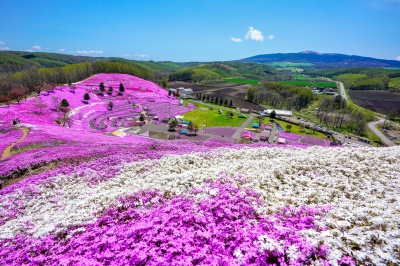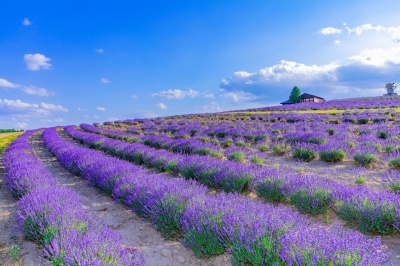Rural Revitalization through Gin? How One Hokkaido Distillery’s Success Might Become a Model

The story of Shakotan Town in Hokkaido is one that, on the surface, mirrors many similar regions in rural Japan. Indeed, consistent depopulation has resulted in its population dropping to about one third of its level from 50 years ago, with a little under 2,000 people calling the town home as of the 2020 census. Located west of Sapporo and stretched out across the Shakotan Peninsula, the area features a dynamic nature, with several impressive capes and long stretches of seaside roads attracting visitors. Known to locals primarily for its rich yield of Uni (sea urchin), it sees an influx of people every summer when the delicacy is in season. However, while this results in a stable influx of consumer spending every year, locals have long been searching for more sustainable solutions to develop new businesses in town. Enter Iwai Hirofumi, who has caused quite a stir with his innovative gin business, Shakotan Spirit, in recent years. We had the opportunity to sit down with him to discuss his business and it connects to rural development for Shakotan Town.
- * Please note that the text shown on this page includes machine translations.
Why start a distillery?
When asking him just how he decided to make gin in Shakotan, Iwai quickly cracks a smile. “I never really thought about gin before starting my own distillery.” Iwai’s background is in rural development, and he was tasked with developing ideas for such a project by the local authorities in Shakotan. “I was tasked with finding suitable uses for the massive acres of unused farmland that exist around the vast area that is Shakotan Town. However, I quickly realized that simply offering this land to companies would not be enough – I had to come up with a concrete plan.” He ended up bringing in several specialists to come up with potential ideas for how to convert the farmland into a new business. “It was then when a forestry specialist mentioned how similar the climate here is to Scotland, and this is what brought me to gin. I realized that we could use raw ingredients already present here to make our unique take on gin.” Of course, it is a long road from idea to execution, but he felt so much potential in Shakotan’s ingredients that he decided to undergo this venture himself.
Making the Most of Local Ingredients
The challenge then was to actually learn how to make gin. “Throughout my career, I have had numerous opportunities to work together with several rural business ventures, so I felt comfortable with the business end of my plan. However, I had to plug my huge gap in knowledge when it comes to gin.” To do this, he gathered some partners to form a team, while also travelling to gin distilleries in Scotland, London and throughout Japan. “Through learning about gin’s history and the distillery process, I gradually came to see the concrete vision for the gin I wanted to make.” The key was to take fully advantage of the local climate and local ingredients.
Rich aroma of red Ezo spruce
“Leveraging all that Shakotan has to offer and adding new value to this region’s nature – all of that sounds great as a business pitch, but what it really means is a process to determine what local ingredients we can use to make delicious gin.” Gin is a unique spirit; in that it has a broad range of potential ingredients beyond its base, which generally consists of barley or another grain and juniper. Luckily, Chinese juniper, a related species, grows naturally in Shakotan. In recent years, this has given rise to the botanical gin movement, where makers experiment with blends of a growing variety of spices, bark, roots, flowers – almost everything goes. “The way we approach making gin comes from the way we select botanicals. Our business started with experts and enthusiasts that understood Shakotan’s forest specifically and natural ingredients in general. Indeed, I believe this is what sets us apart. We set out to select the best local botanicals, a process that led us to collect about 130 types, eventually narrowing down the selection to around 30.” For the primary flavor of his gin, Iwai choose “red spruce”, also known as Sakhalin spruce. “We wanted to emulate a taste that reminds our customers of a walk in the forest, and the thick, resiny notes of red spruce delivers this taste perfectly.” But his meticulous botanical selection process is not the only thing that sets Iwai’s gin apart.
“Our distillery process is quite unique, as we distill each flavor individually and then produce a final blend in the end. Even though this takes longer, it allows us to experiment with different botanicals to create the perfect balance of flavors.” Indeed, aside from red spruce, Iwai also uses flowers such as lavender and Hokkaido mandarin to add flowery or citrusy notes. “We cultivate most of our ingredients on the farmland we are renting from the town, and this has also allowed us to invite locals and visitors to become a part of our distilling process.” The joy of experimenting with different botanicals has become somewhat of an attraction and has led to an interesting customer composition. “We have seen high resonance with female customers, who make up about 60% of our base.” Despite the high alcohol percentage of gin in a culture traditionally accustomed to lower percentage offerings such as Sake and beer, the distinct flavors that the locally made botanical produce has kept customers coming back. “While we officially recommend to pair our gin with a dry tonic water, many of our customers are keen to enjoy the flavors as is, foregoing mixing.”
What's your next venture?
Since its inception in 2017, Shakotan Spirit has launched three different blends of its gin, but what is next for Iwai and his innovative venture? “We do not want to forget our roots as a rural development project. One of the things I am looking most forward too is to further expand our botanical selection, and to create a “botanical library” as part of our showroom, showcasing the different ingredients we use one by one. On the gin front, one trend we are keeping our eyes on is “order-made gin”. Having customers bring their own ingredients and making a gin from them would add a whole other layer in connecting with both botanical and gin enthusiasts.” We for one, can’t wait to visit Shakotan again to see what new ideas Iwai and his team come up with, and we hope you do the same the next time you are in Hokkaido.
Ranking of popular articles
- Hokkaido Summer Travel Guide

- https://www.visit-hokkaido.jp/en/feature/travelguide_summer
- Hokkaido Spring Travel Guide

- https://www.visit-hokkaido.jp/en/feature/travelguide_spring
- Here are the recommended cherry blossom viewing spots!

- https://www.visit-hokkaido.jp/en/feature/sakura
- Best Places to View Flowers in Hokkaido vol. 1

- https://www.visit-hokkaido.jp/en/feature/best-places-to-view-flowers-in-hokkaido-vol-1
- When is the best time to see lavender? Recommended Lavender Spots in Hokkaido

- https://www.visit-hokkaido.jp/en/feature/lavender




